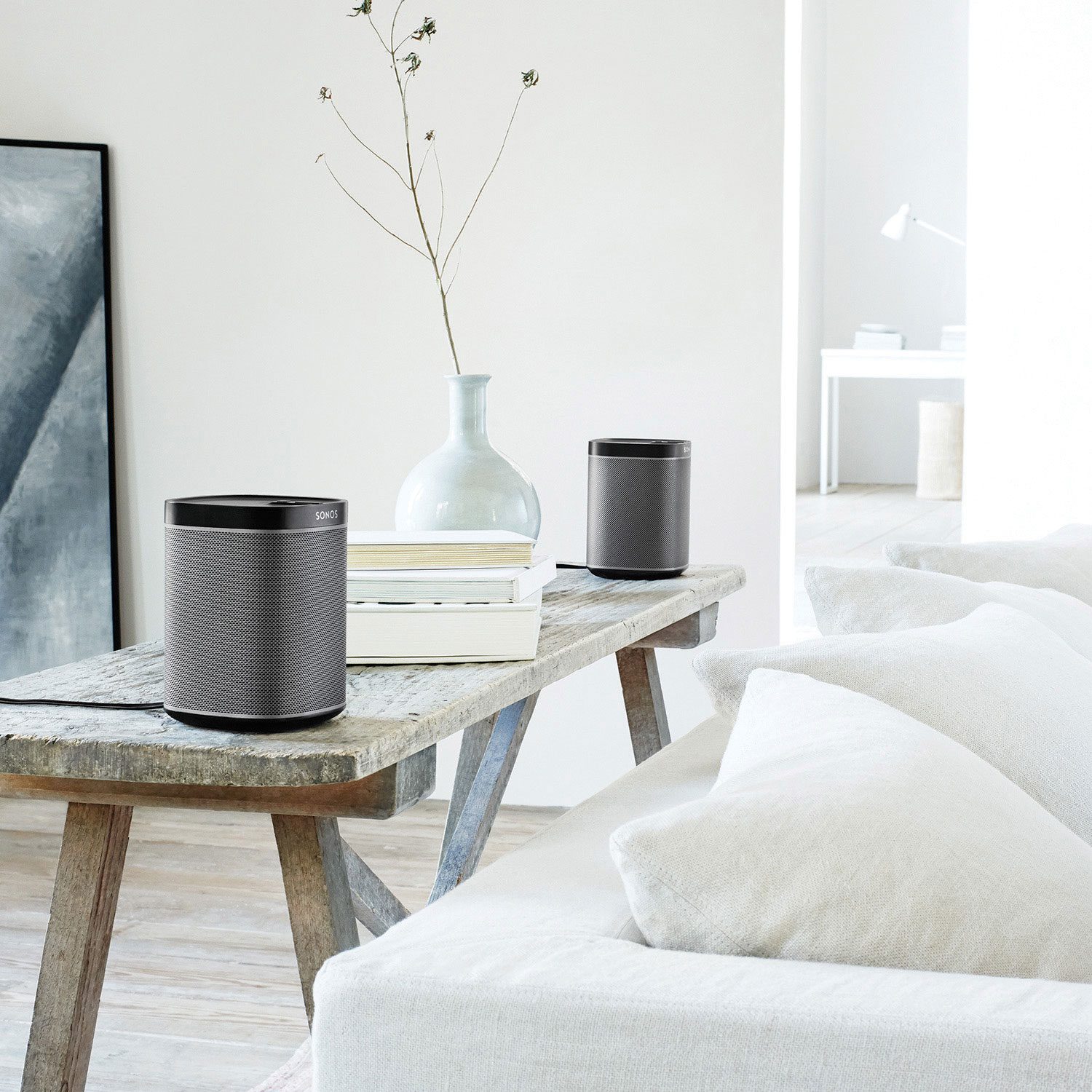 Playing your favorite songs throughout the house used to be a very loud proposition. Even in a larger home, it just isn’t realistic to have your music or podcasts playing at an elevated volume. But, with steady advancements in technology from companies like SONOS, Sony and others, it’s now very easy to play audio simultaneously in multiple rooms in your home, keeping the volume even and balanced throughout. But where should you begin your search?
Playing your favorite songs throughout the house used to be a very loud proposition. Even in a larger home, it just isn’t realistic to have your music or podcasts playing at an elevated volume. But, with steady advancements in technology from companies like SONOS, Sony and others, it’s now very easy to play audio simultaneously in multiple rooms in your home, keeping the volume even and balanced throughout. But where should you begin your search?
Multi-room audio: The Basics
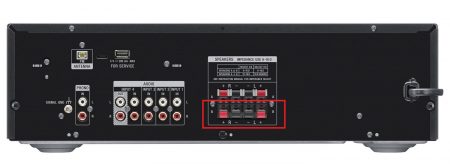
We should start with the basics; a multi-room audio system is a combination of hardware and software that work together in order play the same music, radio or podcast simultaneously to different speakers. This can be achieved by a physical connection (speaker wire, for example) or through wireless communication. If you play music through a stereo receiver currently, you may already have a device that supports multi-room audio. Systems that support multi-room audio call-out a feature called an A/B speaker. Also called a “speaker B switch”, this simply gives you an output for a second set of speakers. This second speaker set can be placed in another room.
Wireless multi-room audio: how to
The focus of this article, however, will be on systems that achieve multi-room audio using Wi-Fi or Bluetooth. Just know before you start that your options for multi-room audio solutions are endless (see Best Buy’s multi-room audio buying guide for many options) and aren’t limited to the makes and models I’ll discuss in this article.
Wireless multiroom audio: SONOS

SONOS has a two main lines of speakers that allow you to play multi-room audio: their older PLAY speakers and their new Sonos One Voice Controlled Smart Speaker.
I personally use a SONOS PLAY:1 in my home. SONOS speakers connect to each other and your smartphone by connecting to your Wi-Fi network. The big advantage to using Wi-Fi over a Bluetooth speaker is that your speakers aren’t reliant on a close proximity connection to your phone. You could walk around the house and continue to jam as you move from room to room.
Once you take a SONOS Play speaker out of the box and download the accompanying SONOS Controller smartphone app, it’s fairly easy to setup. The software used by SONOS speakers allows anyone on your wireless network to control the music for the whole system or for individual rooms.
The flexibility of the system shines with multiple speakers; if you’re playing Charlie Puth throughout the whole house, but then want to isolate the album to one room, you can do so with the touch of a virtual button. In addition, the speakers support a multitude of different apps and audio services like Apple Music, Spotify, TuneIN, SoundCloud, PocketCasts and more.
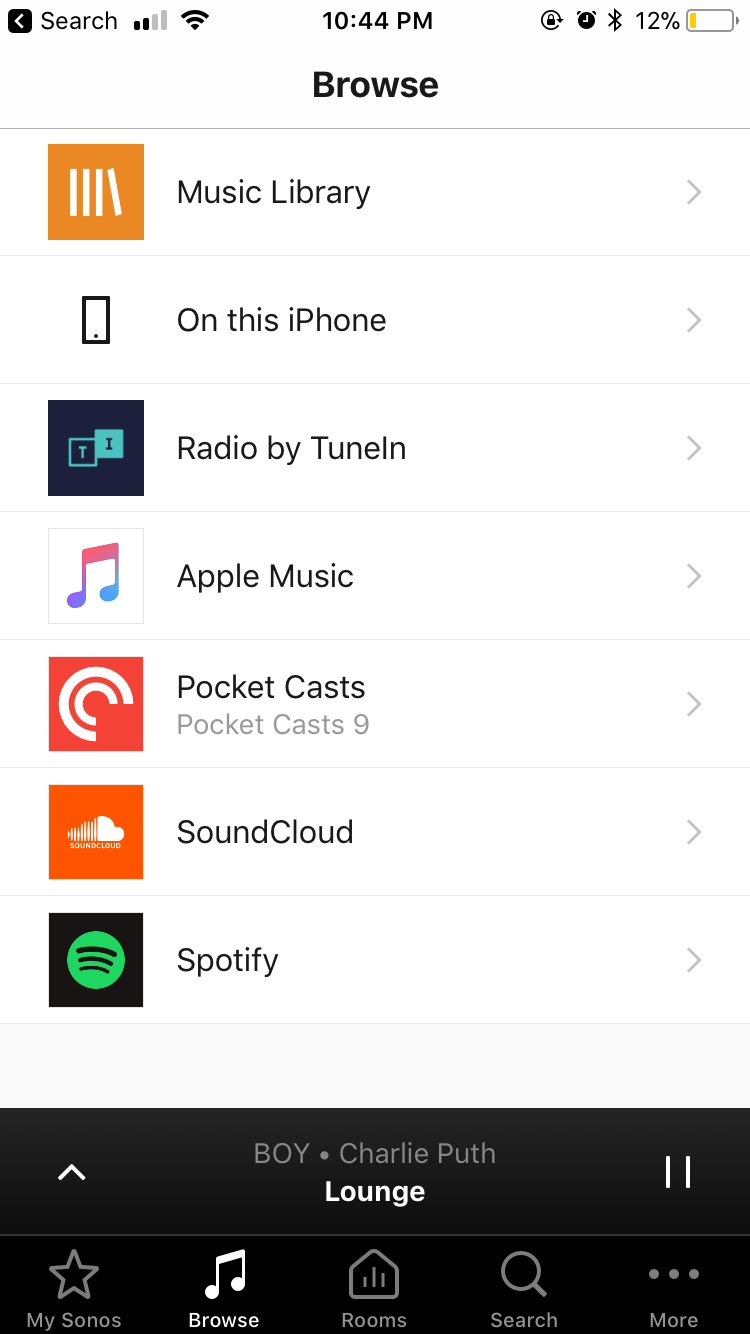
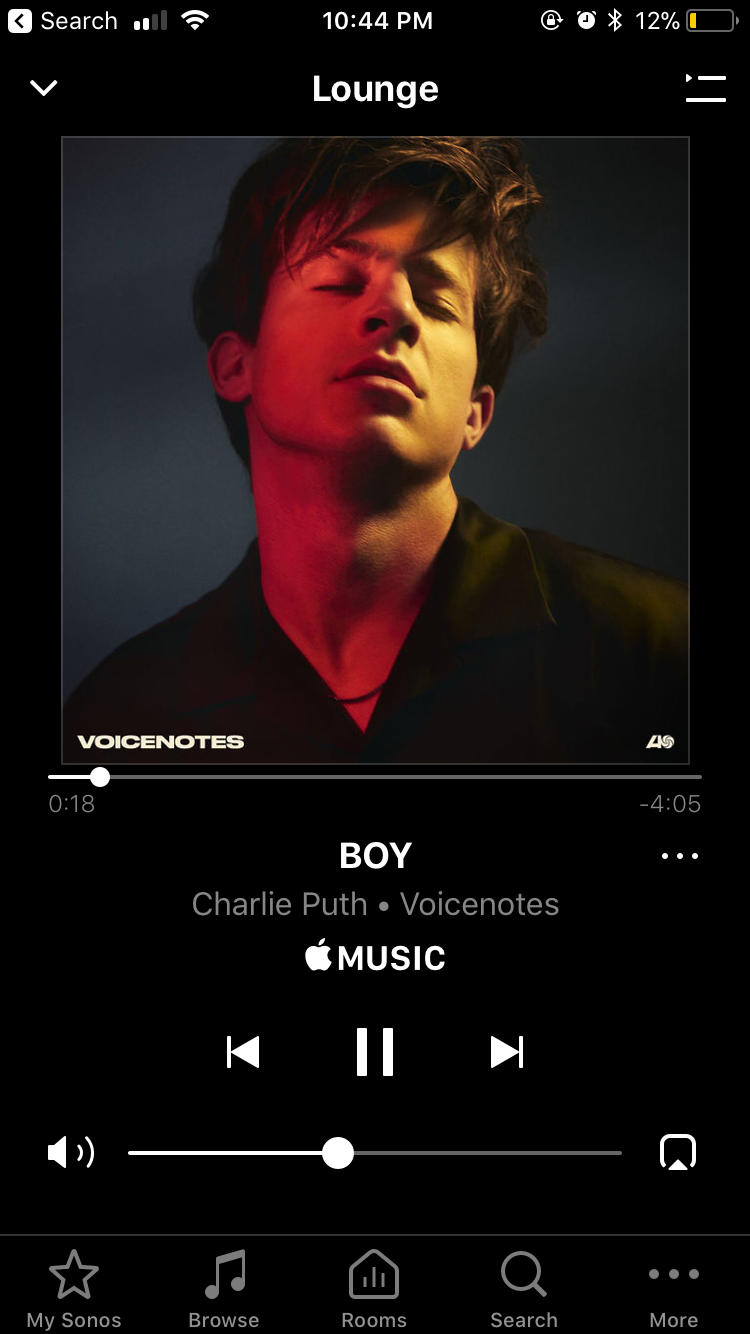
Despite being simple to setup and having good sound quality, there’s a bit of a learning curve with the SONOS wireless speaker software. Additionally, many of the core services that you would connect to your SONOS speakers (like Spotify or Apple Music, for instance) require the premium monthly subscription to access the complete feature set. These devices are great for subscribers to a music streaming service, but are tough to recommend without.
The SONOS speakers are an excellent Wi-Fi solution for multi-room audio. These are speakers that will typically remain in one place in your home, but what if you wanted to move the speakers around your home or outside your home?
Wireless multiroom audio: Sony
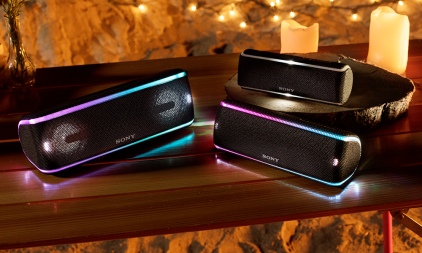 Sony has recently updated their line of SRS-XB speakers. Although these speakers share a lot of functionality with other simple Bluetooth speakers on the market, one feature sets them apart: Party Chain. This feature allows you to create a wireless multi-speaker chain of up to 10 speakers at once.
Sony has recently updated their line of SRS-XB speakers. Although these speakers share a lot of functionality with other simple Bluetooth speakers on the market, one feature sets them apart: Party Chain. This feature allows you to create a wireless multi-speaker chain of up to 10 speakers at once.
The multi-speaker use of these Bluetooth speakers aren’t as slick as a Wi-Fi option (like the newly released Bose SoundTouch Wave IV or the previously discussed SONOS options). You can’t isolate specific speakers in the chain and if your phone rings, the music will stop. However, if you’re moving these speakers throughout your home or office and worry about a consistent connection to your wireless network or use them outside, this could be a good option. The SRS-XB speakers are IP-67 rated meaning that they can IP67 means the unit can be dropped into up to a meter of water for half an hour.
Countless Alternatives in multi-room sound
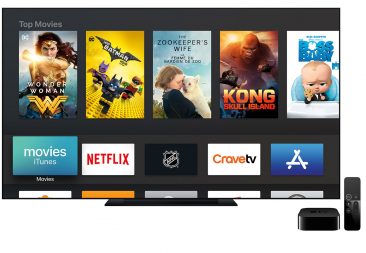 Just know that there are tons of different alternatives to deliver multi-room audio to your home. You could even have multi-room audio capabilities right under your nose and not even know it! For instance, if you live in an Apple device ecosystem, and have multiple Apple TV 4K devices hooked up to your wireless network, you can use your AirPlay to stream audio from your iPhone, iPad or Mac to one or all of your Apple TVs at the same time. Before you start shopping your options, you may want to learn more about all of the differences between Bluetooth and Wi-Fi speakers.
Just know that there are tons of different alternatives to deliver multi-room audio to your home. You could even have multi-room audio capabilities right under your nose and not even know it! For instance, if you live in an Apple device ecosystem, and have multiple Apple TV 4K devices hooked up to your wireless network, you can use your AirPlay to stream audio from your iPhone, iPad or Mac to one or all of your Apple TVs at the same time. Before you start shopping your options, you may want to learn more about all of the differences between Bluetooth and Wi-Fi speakers.




There are other advantages to using WiFi as opposed to Bluetooth. Primarily sound quality being significantly better on WiFi, plus unlike when using Bluetooth to play music, when your phone rings, the music won’t stop on WiFi.
Another item to note would be the integration of a Pre-Amp adapting unit such as the Sonos Connect, https://www.bestbuy.ca/en-ca/product/sonos-sonos-connect-wireless-stereo-receiver-ctnzpus1/10176838.aspx? , Polk Audio’s P1, https://www.bestbuy.ca/en-ca/product/polk-audio-polk-audio-preamp-adapter-p1-dark-grey-p1/10319766.aspx? , and Denon HEOS Link, https://usa.denon.com/us/heos-link .
Comments are closed.